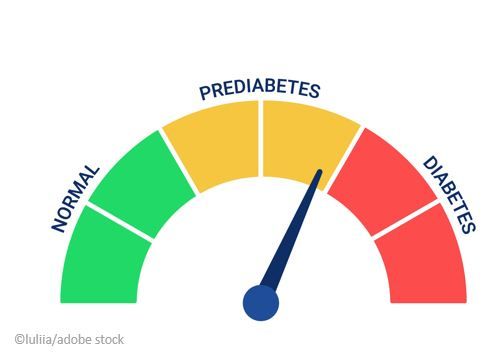Oral Superabsorbent Hydrogel May Help Prevent Progression of Prediabetes to Type 2 Diabetes: New Research
GS200, the investigational non-systemic oral superabsorbent hydrogel, may help reduce postprandial hyperinsulinemia and fasting serum insulin in persons with prediabetes, independent of weight loss, according to new research presented at the 17th Annual Cardiometabolic Health Congress, held October 19-22, in Boston.
The international research team suggests that use of GS200 has the potential to impact the progression of prediabetes to type 2 diabetes (T2D) and may also prove effective in treatment of metabolic syndrome.

The role of elevated postprandial insulin in degradation of ß-cell function, and thus progression to T2D or to more severe disease, is well characterized. The current analyses capitalize on data from the recent randomized placebo-controlled LIGHT-UP study which assessed the effects of GS200 vs placebo on weight loss in adults with a body mass index (BMI) of 27-50 kg/m2 and prediabetes or T2D. Changes in fasting insulin in the study were examined as a secondary endpoint and changes in postprandial insulin were evaluated as an exploratory endpoint.
During the 25-week LIGHT-UP study, mean weight loss among the 254 participants was 7.1% for GS200 and 4.6% for placebo. Participants with prediabetes (n=42 in each arm) completed a 2-hr oral glucose tolerance test (OGTT) at baseline and week 25, with plasma glucose and serum insulin measured at 15- and 30-minute intervals.
Fasting serum insulin (FSI) was measured throughout the study in all participants with FSI ≥10 μU/mL using a repeated measures mixed model, outliers being removed.
Investigators used the trapezoidal method to calculate area under the curve (AUC) and ANCOVA model to assess differences with weight loss as a covariate, according to the study abstract.
FINDINGS
Fasting insulin. Mean baseline FSI was 20.4 μU/mL in the GS200-treatd group and 19.4 μU/mL in those treated with placebo. By the end of the study, reductions in FSI among participants randomized to GS200 were significantly greater than among those receiving placebo (-26% vs -9.1%; p=.05)
Postprandial insulin. The group of LIGHT-UP participants with prediabetes who completed the baseline and week 25 OGTT was 59.5% women and had an average age of 47.1 years. Mean fasting glucose among them was 104.6±10.4 mg/dL. According to the study abstract, baseline insulin AUC was similar for the GS200- and placebo-treated arms: 13 005.8 μU/mL for GS200 and 13,233.8 μU/mL for placebo.
At week 25, the research team found that the insulin AUC was reduced by 17.0% in participants receiving GS200 and increased by 5.0% in the placebo arms (mean difference: -22.0%, p=.04).
Further analysis found that reduction in postprandial insulin at T60 was greater among participants taking GS200 than those taking placebo (-35.0 for GS200 vs -1.5 μU/mL for placebo, p=.05) and also at T120 (-30.9 for GS200 vs 0.5 μU/mL for placebo, p=.04).
The GS200-treated participants also had greater reduction in insulin Cmax vs placebo-treated patients (mean difference: -47.3 μU/mL, p=.03). The investigators report no significant difference between treatment groups in changes in glucose AUC0-120 or in HOMA-IR.
Administration of GS200 in people with prediabetes significantly improved postprandial insulin secretion independently of weight loss and significantly reduced FSI vs placebo in people with prediabetes or T2D, the authors state in their conclusion. They call for additional studies to further investigate the impact of GS200 on prediabetes progression to T2D and on measures of metabolic syndrome.
Reference: Luzi L, Greenway F, Matejkova E, et al. Effects of Gelesis200, an oral superabsorbent hydrogel, on postprandial insulin response in people with prediabetes: an analysis of the LIGHT-UP study. Poster presented at Cardiometabolic Health Congress 2022; October 19-22, 2022; Boston, MA.